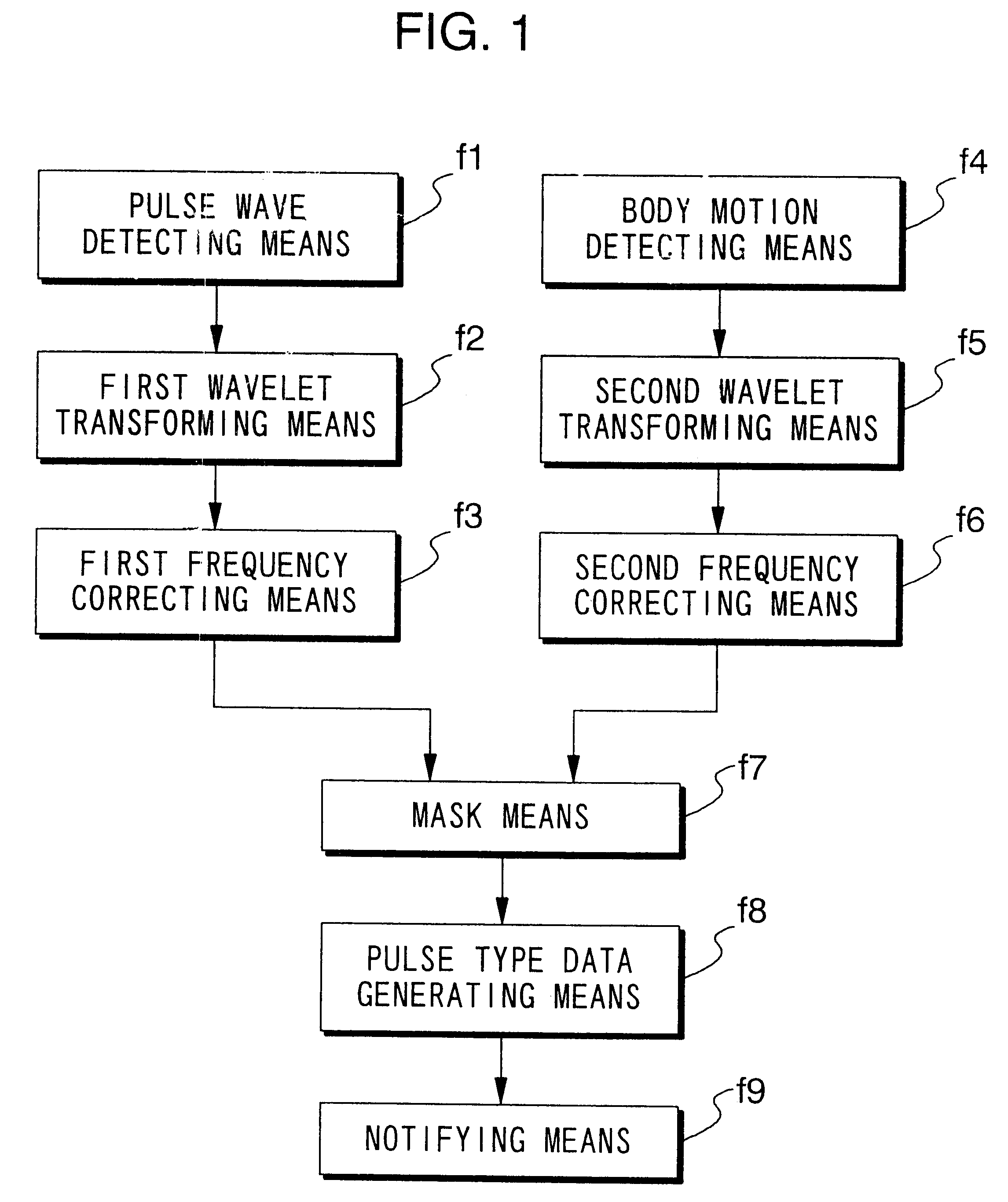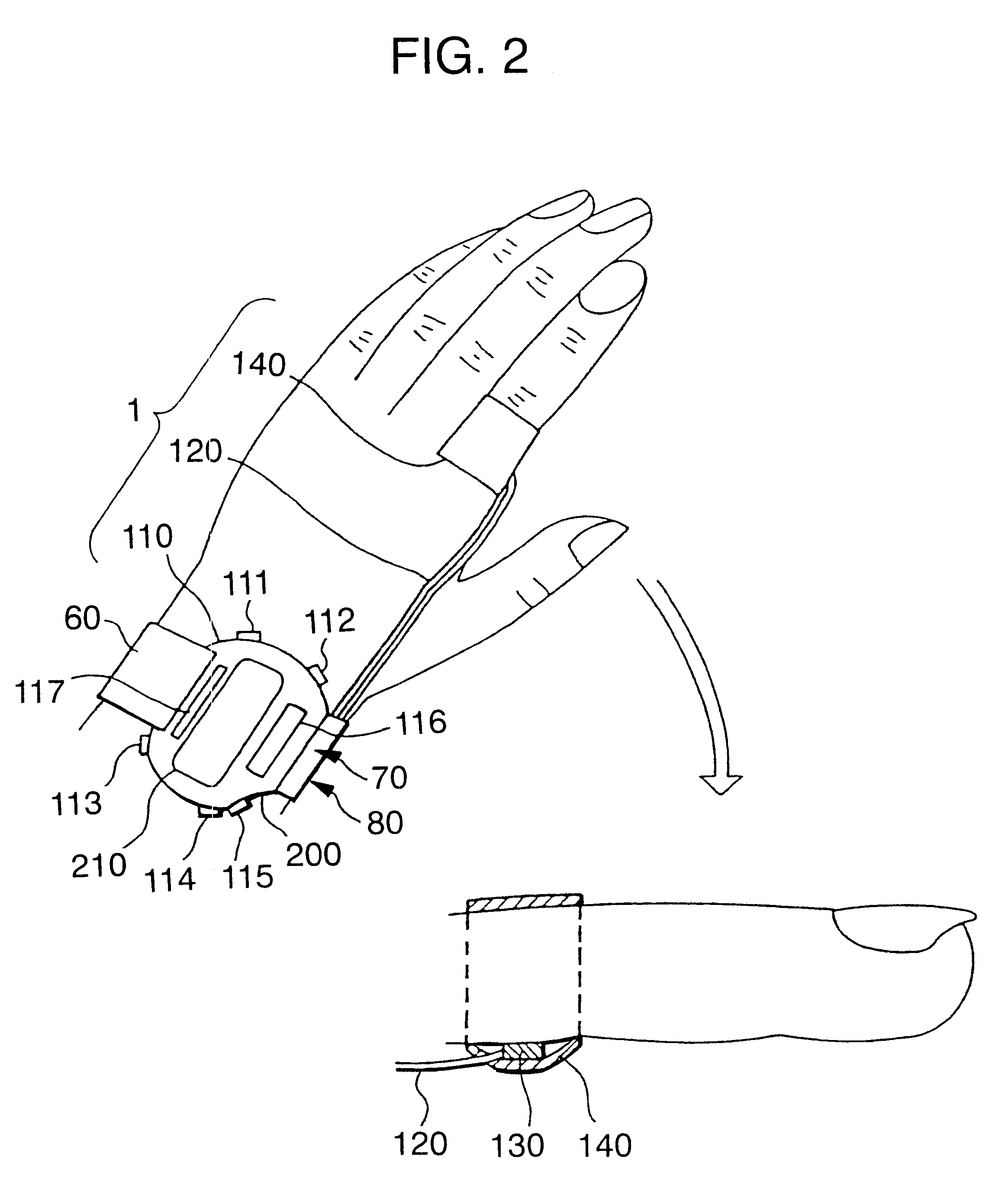Pulse wave diagnosing device
a technology of pulse wave and diagnostic device, which is applied in the direction of instruments, catheters, angiography, etc., can solve the problems of difficult to teach this technique, difficult to get an accurate pulse type, and difficulty in obtaining exercise intensity based on subjective evaluation
- Summary
- Abstract
- Description
- Claims
- Application Information
AI Technical Summary
Problems solved by technology
Method used
Image
Examples
second embodiment
The second embodiment employed a design in which the stride was corrected according to the pitch during running. However, a situation may be considered in which the stride varies not only with the pitch during running, but also in accordance with the pulse.
A design is also acceptable employing a table similar to table 2135 in which the relationship between pulse rate and the stride correction coefficient is stored in advance.
When both pitch and pulse rate are taken into consideration when correcting the stride, then a design is also acceptable which employs both pitch and pulse rate as parameters when recording the stride correction coefficient, to generate a two-dimensional table. In this case, as shown by the broken line (1) in FIG. 58, the pulse rate obtained by FFT processor 2103 is supplied as a parameter for two dimensional table 2135.
2-5: Modifications for Chapter 2
The exercise performed by the subject in the first and second embodiments was running, however, the present inve...
embodiment 1
4-2-2: Embodiment 1
The first through seventh embodiments relate to a cardiac function diagnosing device employing a cardiac output detecting device. The eighth through fourteenth embodiments relate to a cardiac function diagnosing device employing a stroke-volume-per-beat detecting device.
4-2-2-1: Structure of Embodiment 1
The structure of a cardiac function diagnosing device employing the cardiac output detecting device according to the first embodiment of the present invention will now be explained with reference to the accompanying figures.
4-2-2-1-1: External Structure of Embodiment 1
The external structure of cardiac function diagnosing device 42 in this example is the same as that of pulse wave diagnosing device1 explained in Chapter 1 (see FIG. 2). Namely, roughly speaking, cardiac function diagnosing device 42 is formed of a device main body 110 in the form of a wrist watch, a cable 120 which connects to device main body 110, and pulse wave detection sensor unit 130 which is pr...
embodiment 2
1. Structure of Embodiment 2
FIG. 90 is a block diagram of a cardiac function diagnosing device 42 according to the second embodiment. As in the first embodiment, in the second embodiment, the body motion component MHt is detected using acceleration sensor 130' and waveform processor 410. However, this embodiment differs from the first embodiment in that body motion component removal and heart rate and ejection duration detection are carried out using wavelet transformation. The external structure of the second embodiment is the same as that of the first embodiment shown in FIG. 2.
4-2-3-1-1: First and Second Wavelet Transformers, and First and Second Frequency Correctors
In FIG. 90, a first wavelet transformer 420 performs conventional wavelet transformation on pulse waveform MH output from pulse wave detection sensor unit 130, to generate analyzed pulse wave data MKD. Second wavelet transformer 422 performs conventional wavelet transformation on body motion waveform MHt output from a...
PUM
 Login to View More
Login to View More Abstract
Description
Claims
Application Information
 Login to View More
Login to View More - R&D
- Intellectual Property
- Life Sciences
- Materials
- Tech Scout
- Unparalleled Data Quality
- Higher Quality Content
- 60% Fewer Hallucinations
Browse by: Latest US Patents, China's latest patents, Technical Efficacy Thesaurus, Application Domain, Technology Topic, Popular Technical Reports.
© 2025 PatSnap. All rights reserved.Legal|Privacy policy|Modern Slavery Act Transparency Statement|Sitemap|About US| Contact US: help@patsnap.com



